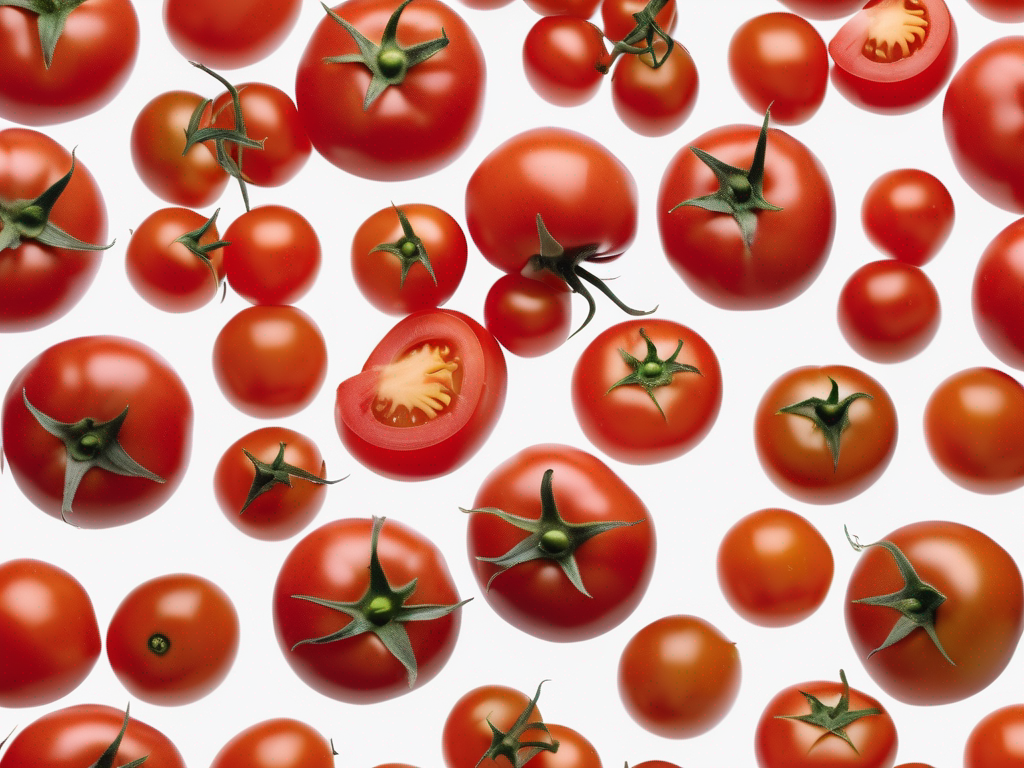
How Long Can Garden Tomatoes Be Safely Stored in the Pantry Before They Go Bad?
Get Your Free Food Safety Cheat Sheet
30 most common foods with instant answers. Print it and stick it on your fridge—completely free!
How Long Can Garden Tomatoes Be Safely Stored in the Pantry Before They Go Bad?
Garden tomatoes are a versatile and delicious ingredient that can be used in various dishes, from salads to sauces. However, knowing how to store them properly is essential to ensure they stay fresh and safe to eat for as long as possible. In this blog post, we will discuss how long garden tomatoes can be safely stored in the pantry before they go bad, along with practical tips on how to extend their shelf life. (Garden tomato)
Factors Affecting Shelf Life of Garden Tomatoes
Several factors can influence how long garden tomatoes can be stored in the pantry before they spoil. Understanding these factors can help you make informed decisions about the storage and consumption of your tomatoes.
1. Ripeness
- Fully ripe tomatoes: These are more perishable and should be consumed within a few days.
- Partially ripe tomatoes: These can be stored for a slightly longer period but should still be used promptly.
2. Temperature
- Room temperature: Tomatoes should be stored at room temperature, ideally around 55-70°F (13-21°C). Avoid storing them in the refrigerator, as this can affect their texture and flavor.
3. Humidity
- High humidity: Tomatoes prefer a slightly humid environment, so consider storing them in a cool, dark place with some ventilation.
4. Bruising and Damage
- Inspect your tomatoes: Check for any bruises, cuts, or signs of decay before storing them. Damaged tomatoes should be used first to prevent spoilage.
Storage Tips for Garden Tomatoes
Proper storage is key to extending the shelf life of garden tomatoes and ensuring they remain fresh and flavorful. Here are some practical tips to help you store your tomatoes effectively:
1. Use a Basket or Tray
- Place tomatoes in a single layer: Avoid stacking tomatoes on top of each other, as this can lead to bruising and spoilage.
2. Keep Them at Room Temperature
- Avoid direct sunlight: Store tomatoes in a cool, dark place away from direct sunlight and heat sources.
3. Check and Rotate
- Regularly inspect your tomatoes: Remove any overripe or spoiled tomatoes to prevent them from affecting the rest.
4. Store Away from Ethylene Producers
- Keep tomatoes separate from ethylene-producing fruits: Ethylene can speed up the ripening process of tomatoes, so store them away from fruits like bananas and apples.
5. Consider Refrigeration for Ripe Tomatoes
- Refrigerate ripe tomatoes: If your tomatoes are fully ripe and you can't consume them all in time, you can store them in the refrigerator for a few days to slow down the ripening process.
How Long Can Garden Tomatoes Last in the Pantry?
The shelf life of garden tomatoes can vary depending on their ripeness and storage conditions. Here is a general guideline on how long tomatoes can be safely stored in the pantry before they go bad:
- Fully ripe tomatoes: 2-3 days
- Partially ripe tomatoes: 4-5 days
- Refrigerated ripe tomatoes: Up to a week
By following the storage tips mentioned above and keeping a close eye on the condition of your tomatoes, you can maximize their shelf life and enjoy them at their best.
Conclusion
In conclusion, garden tomatoes can be safely stored in the pantry for a few days to a week, depending on their ripeness and storage conditions. By storing them at room temperature, checking for signs of spoilage, and following proper storage practices, you can extend the shelf life of your tomatoes and reduce food waste. Remember to use your tomatoes in a timely manner and enjoy their fresh flavor in your favorite recipes.
For more information on garden tomatoes, visit our main [garden tomato](/food/garden tomato) page. Stay safe, happy cooking, and enjoy the delicious taste of fresh garden tomatoes! (Garden tomato)
Authoritative Food Safety References
These agencies and university labs inform every tip and health precaution we publish.
USDA FoodKeeper – Cold Storage Guidelines
Official refrigerator, freezer, and pantry timelines maintained by the U.S. Department of Agriculture.
Visit USDA FoodKeeperFDA Produce Safety Rule & Grower Guidance
Field-to-fridge handling practices that prevent contamination of fruits, vegetables, and leafy greens.
Visit FDA Produce SafetyCDC Foodborne Illness Prevention Hub
Surveillance-backed guidance on pathogens, symptoms, and steps to reduce foodborne illness risk.
Visit CDC Food SafetyUC Davis Postharvest Technology Center
University research detailing optimal storage atmospheres for produce after harvest.
Visit UC Davis PostharvestPenn State Extension – Home Food Preservation & Safety
Peer-reviewed extension bulletins on safe canning, chilling, and reheating practices.
Visit Penn State ExtensionGet Your Free Food Safety Cheat Sheet
30 most common foods with instant answers. Print it and stick it on your fridge—completely free! Want more? Upgrade to the complete guide with 70+ foods.
Scan your food directly and get instant safety info using our AI-powered camera feature.